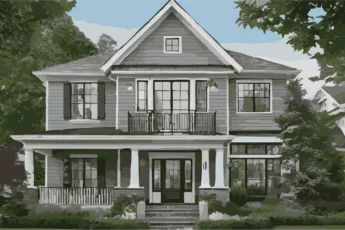Introduction: The Rent Increase Dilemma
Over the last couple of weeks, we have focused the LandLord Lens on Rent Increases in Toronto. We developed a Rent Increase Guide and explored Rent Increase Considerations. The most common questions we heard included: “How can I increase rent?” and “By how much can I increase the rent?”
Beyond the Numbers: The Overlooked Element
With these two questions, an important element is being overlooked. We asked Trevor Valade, the Vice President and Broker of Record at LandLord, to weigh in. He states:
“You can consistently and automatically raise your rent whenever possible, by the maximum amount, and when you list your property, you can aim for the highest possible lease rate that the market will bear. However, that strategy can hurt you and the investment in the long run. The property becomes a product as soon as you take it to market, and if it’s not aligned with current market trends, you’ll always struggle to achieve your objectives, and you’ll alienate some great potential tenants.”
Aligning with Market Trends: The Competitive Edge
Aligning with current market trends can mean different things for different property types. With more modern condos coming online for lease, landlords are competing with brand new laminate floors, marble countertops, and stainless-steel appliances – not to mention hotel-style amenities.
Trevor observes, “We’re seeing some of our more conservative clients struggle to tenant their apartments, and when we visit the spaces to strategize, it’s obvious they haven’t been upgraded in many years.”
The Consequences of Neglected Properties
While dated, neglected properties will be tenanted, the landlord will have to meet the market and will almost always have to adjust their pricing expectations well below the market mean. For those few who manage to secure a tenant paying top-dollar for a tired unit, before long, the tenant will start to feel as though they’re overpaying for something they aren’t totally satisfied with.
Trevor explains, “An unhappy tenant is often less likely to collaborate when it comes to repairs and maintenance that don’t immediately impact their unit. They’ll also be encouraged to try and recoup any rent they feel they’ve been paying unfairly, whether through holdbacks or by deducting expenses from their rent for things they feel the unit requires. What’s more, the tenants can also grow resentful and neglect the property, resulting in more pronounced levels of wear and tear, or even negligent damage.”
The Negative Cycle of Overpricing
Charging a premium for rent, without offering a premium product can, and often does, create a negative cycle that will ultimately make owning a rental property more difficult and more costly.
Maintaining Property Value: Practical Tips
At times of turnover, consider at least a fresh coat of paint. Replace the appliances at appropriate intervals, and avoid installing “soft surfaces” that tend to hold stains and odors. Keep pace with the competition, especially if you intend to achieve a similar lease rate.
Trevor and his team have noticed particular downward pressure on basement units over the last several months: “Once a landlord starts inching toward $1,800.00 a month, they’re in condo territory. No one is going to visit a dark, dated basement apartment and decide to pay that kind of money when they could rent something of a similar size – or even slightly smaller – on the 20th floor of a brand-new condo building with access to a gym, a pool, and full-sized windows.”
Choosing the Right Investment Property
According to Trevor, “Not all properties make for smart, strategic additions to an investment portfolio. Some have fatal flaws: location, layout, size, structural issues. You’ll always struggle to move forward if the asset isn’t effective.”
Expert Guidance for Property Investors
As the head of leasing and real estate, Trevor guides our clients to invest in high-performing real estate across the GTA. He and the team also handle tenancy procurement and pricing strategy, and can assist with post-purchase renovations and ongoing maintenance.
Conclusion: Take the Next Step
To discuss investing, leasing, or renovating, schedule a free consultation with our team today!
For More Real Estate News Subscribe to Our Newsletter or Check out TREB’s Market Outlook




